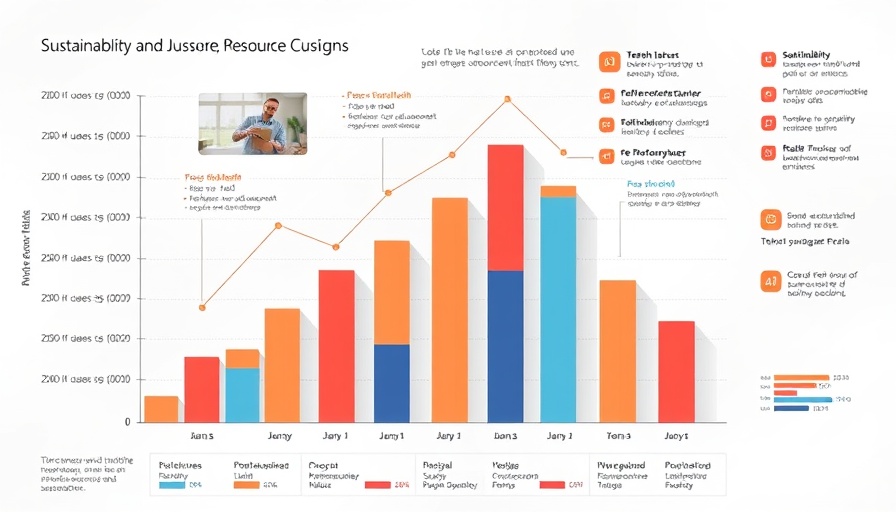
Modern Warehousing: Adaptations for a Sustainable Future
The landscape of warehousing is undergoing a rapid transformation. Given the rise of technology, persistent labor shortages, and heightened safety concerns, investing in modern solutions has become crucial. But where should these investments be concentrated, and how do businesses avoid financial pitfalls? Here’s a look at essential investments for modern warehouses aligned with green practices.
Investing in Visible Safety Measures
Warehouses are vibrant ecosystems where movement and storage intersect. Without clear communication and safety signals, confusion can easily arise—leading to accidents and inefficiencies. Enhancing visual communication through effective signage, floor markings, and safety barriers is vital. For instance, companies like Seton provide tailored solutions that foster a safer working environment.
By making safety visible, risks diminish, misunderstandings are minimized, and operations become more streamlined. This proactive approach not only promotes a secure workspace but also indicates a commitment to employee well-being, which in turn enhances productivity.
Smart Systems to Streamline Logistics
Efficiency in logistics is about more than quick operations; it requires structure and transparency. Implementing automated systems like barcode scanning and inventory management apps can significantly reduce errors, especially during peak seasons. These technologies provide essential insights into movement patterns and operational bottlenecks—empowering businesses to pivot quickly and maintain nimbleness in fast-paced environments.
Moreover, these forecasts allow for real-time responses to fluctuating demand, ensuring warehouses remain agile. The integration of technology is not merely a choice; it is a necessity in today’s ever-evolving logistical landscape.
The Importance of Comfort and Ergonomics
It’s a common misconception that comfort and ergonomics are mere add-ons in warehouse design. Repetitive actions can lead to discomfort and long-term injuries; therefore, investing in ergonomic solutions can enhance both employee wellness and overall productivity. Features like height-adjustable workstations and ergonomic picking tools are critical to reducing fatigue and promoting an efficient workflow.
Such improvements in the workplace not only contribute to reducing sick days but also signal to employees that their health is valued. With happier and healthier teams, companies can enjoy higher productivity rates and lower employee turnover.
Optimizing Inventory Management
Inventory management is a perennial challenge for warehouses. Holding too much stock can drain resources, while insufficient inventory can halt operations. Modern software solutions provide the digital support necessary for accurate tracking of inventory levels, ensuring that businesses can maintain optimal stock levels without the worry of overstocking or stockouts.
Cloud-based systems offer real-time data, allowing managers to assess trends and respond to supply chain dynamics promptly. When integrated with other operational tools like ERP or transport planning systems, inventory management becomes more seamless and efficient.
Creating Efficient Flow Rather Than Congestion
A well-organized warehouse is a place where movement is prioritized over mere storage. By strategically structuring inventory based on demand—from frequently used items to seasonal products—businesses can enhance flow and minimize unnecessary movements. Techniques like ABC categorization based on inventory turnover can lead to optimized operational efficiency.
These improvements reflect an understanding of how to create an engaging and functional workspace, ultimately leading to improved overall performance.
Green Investments and Sustainable Practices
Investing in sustainable materials and solutions is becoming a cornerstone of modern warehouse design. Renewable energy sources like solar panels and energy-efficient lighting systems are not only beneficial for the environment but can significantly reduce operational costs in the long run.
By championing sustainability, companies not only comply with increasing regulations but also build a valued brand image that resonates with the growing consumer demand for eco-friendly practices. Sustainability should not be seen as a cost but as substantial long-term savings and a competitive edge.
Conclusion: Making Informed Investments
The modern warehouse need not be a burden on resources but rather a beacon of efficiency, safety, and sustainability. By embracing visible safety strategies, investing in ergonomic solutions, optimizing inventory management, and following environmentally friendly practices, businesses can turn challenges into opportunities for advancement. Ultimately, informed investments in these areas can enhance productivity and create a healthier work environment.
As you consider your investments, reflect on how these strategies can help shape a resilient and sustainable future in warehousing. Investing wisely today ensures a safer, more productive tomorrow for everyone involved.
 Rij toevoegen
Rij toevoegen






Write A Comment